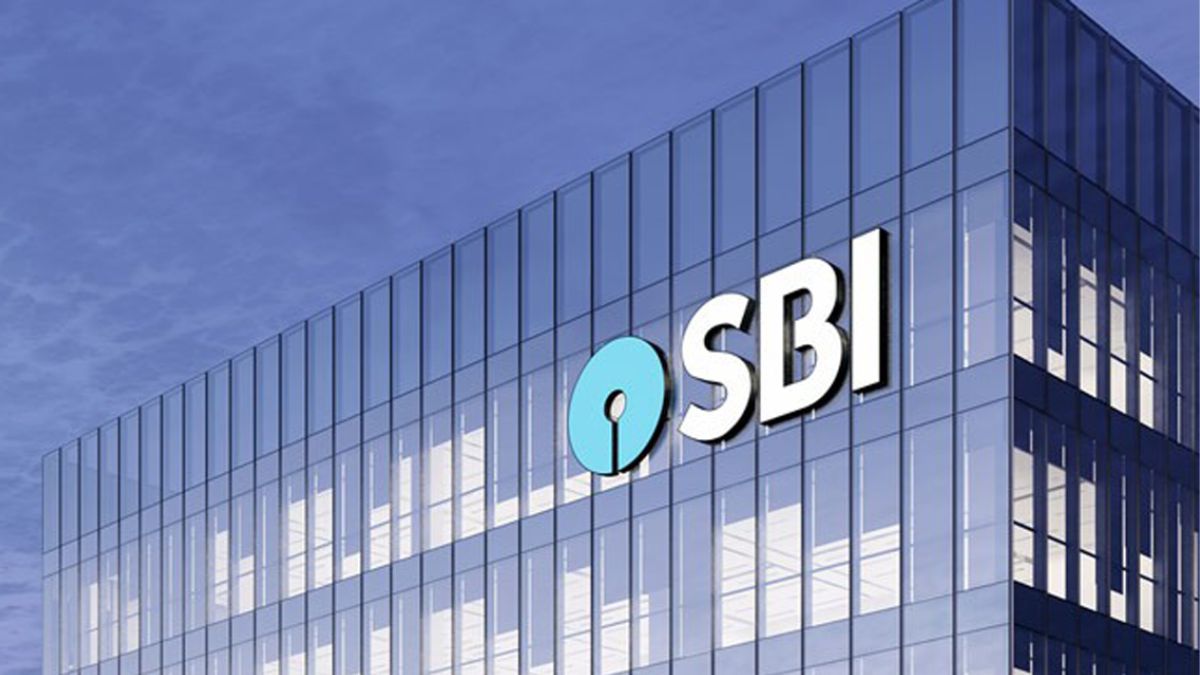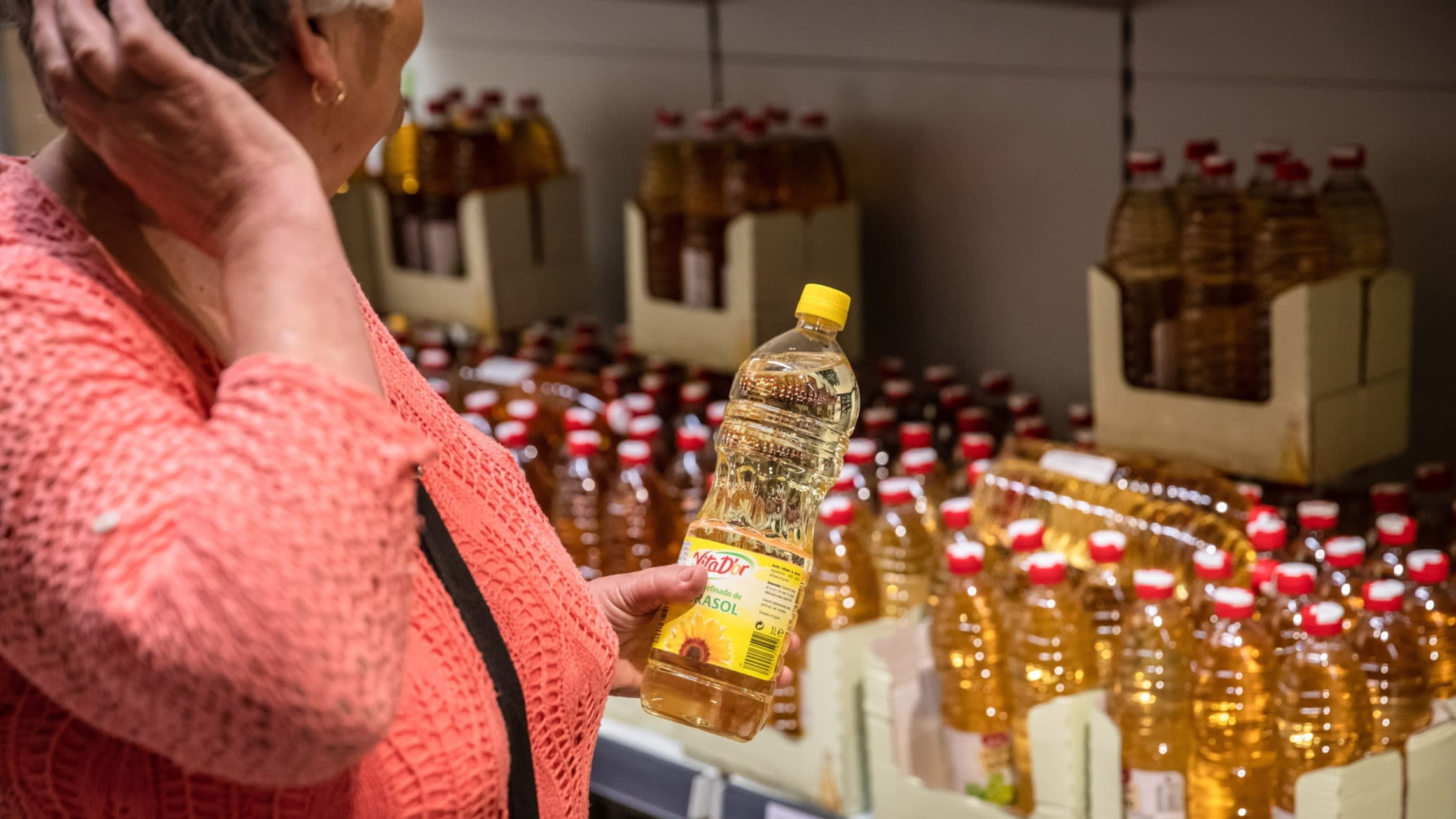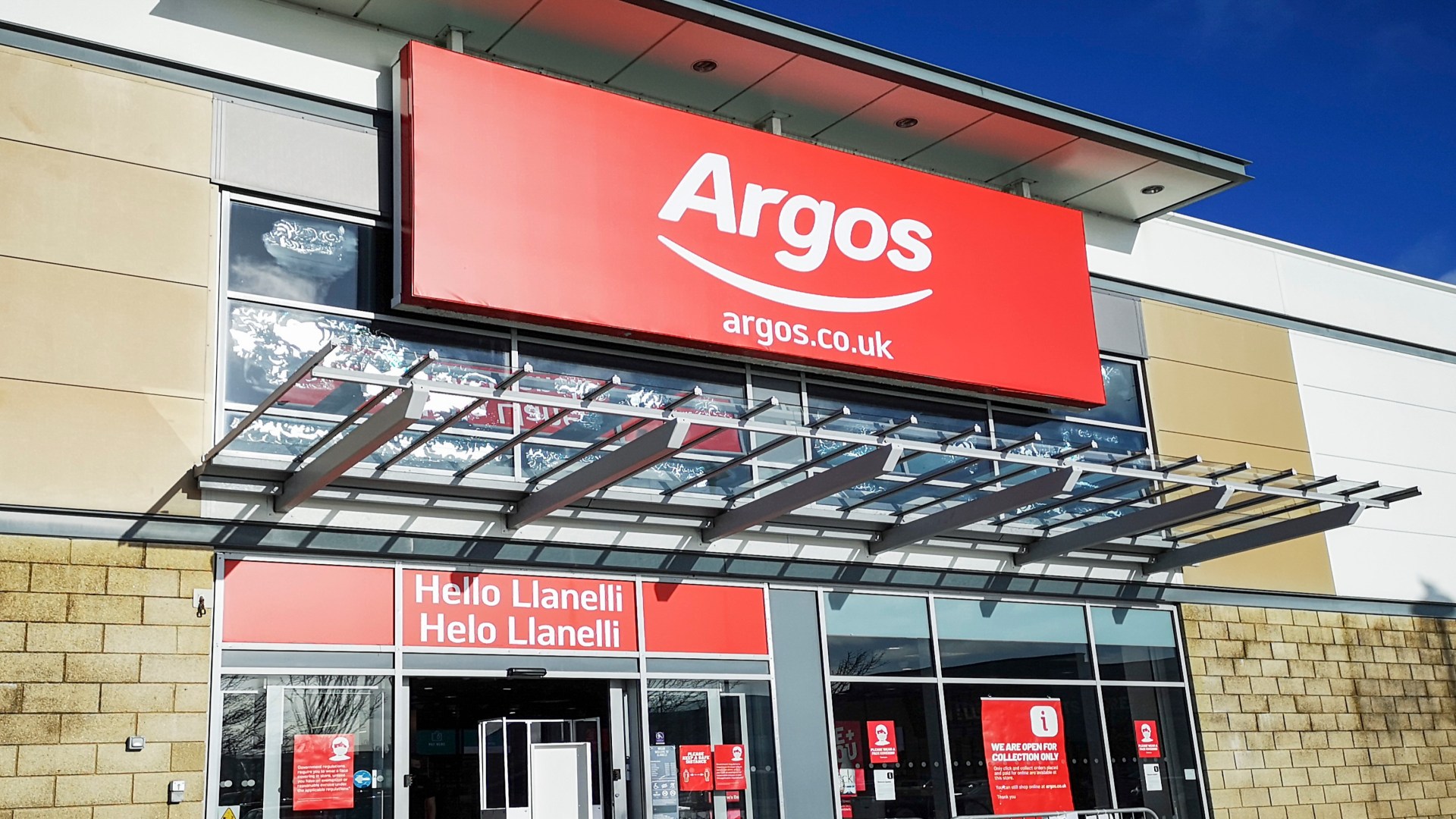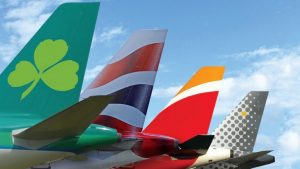Business
SBI quarterly results beat estimates, but shares tank- The Week

The biggest public-sector lender in India, SBI, announced its second-quarter results on Friday afternoon, triggering a slide in the stock price despite trading in the green in the morning trade.
For the quarter, State Bank of India (SBI) net profit jumped 27.9 per cent year-on-year to Rs 18,311 crore, beating market estimates. SBI also recorded a credit growth of 14.93 per cent year-on-year. Consolidated net profit saw a yearly improvement of 23 per cent to reach Rs 19,782 crore.
Despite beating the market outlook, shares slipped post the earnings announcement by at least 2.3 per cent in afternoon trade. SBI shares had traded higher in morning trade on Friday ahead of the quarterly results, hitting a high of Rs 863.50.
ALSO READ | Jet Airways: From major Indian private air carrier to bankruptcy and liquidation
Investors were also looking at the asset quality, and the gross Non-Performing Assets (NPA) ratio at the quarter-end stood at 2.13 per cent. Compared to the same period last year, this was an improvement of 42 basis points. Provisions for bad assets almost doubled to Rs 3,631 crore.
For banks, a lower NPA is better. A higher NPA ratio means that the bank has too many non-functioning loans. SBI’s net NPA for Q2 was 0.53 per cent compared to 0.57 per cent from the previous quarter.
On Thursday, the State Bank of India also announced the launch of an innovation hub in Singapore in partnership with the local collaborative innovation platform for financial institutions, APIX.
Money
Rightmove reports ‘softer’ than expected activity on new build homes

While Rightmove’s new homes developer partners are encouraged by the government policy support, new build activity remains softer than last year.
The post Rightmove reports ‘softer’ than expected activity on new build homes appeared first on Property Week.
Business
Ducati’s new 2025 Streetfighter V2 and V2S heading to India, priced at…- The Week

Indian Ducati fans are in for a treat as the new V2-based motorcycles, which are both powerful and light on the bank, make their way to India. Over the past few days, the Indian website of the Italian superbike brand has undergone significant changes, headlining the new Panigale and Streetfighter. While Panigale is a racing model, Indian markets were awaiting the nimble and powerful naked models under the Streetfighter tag.
Ducati has finally provided a much-needed update on its V2 motorcycles. The 2025 Streetfighter V2 and V2S are not your typical can’t-afford-a-V4-so-here-we-are bikes.
Earlier, V2s were getting the rap with many a rider opting for 208HP V4 over the 153HP V2—carrying a hefty price tag of USD 18,000 (about Rs 15.1 lakhs). But the latest 2025 Streetfighter V2 with a 120HP-producing 890cc V2 V-twin engine will cost you just below USD 15,000 (around Rs 12.5 lakhs) according to their global page, widening its gap from the V4. And suddenly, the Streetfighter could be an attractive buy that will go to war against the likes of KTM Duke 990, Triumph Street Triple, and Yamaha MT-09.
ALSO READ | EICMA 2024: India’s Royal Enfield goes all out at Milan
The new Streetfighter V2S will now cost a bit more than the earlier V2, but it bears the Ducati’s “S” brand, making it a top-shelf beast. Both V2 and V2S get a 5-inch TFT dashboard derived from the one you stop in their new Panigale V4.
The India Ducati page has yet to update the price specs for the V2-based Streetfighters, but the V4 and V4S begin at ex-showroom tags of Rs 24.6 lakhs and Rs 27.8 lakhs, respectively. Indian buyers hope for a much more affordable price range, for these new V2s may have more takers.
Money
Sesame Bankhall acquires strategic stake in mortgage broker


Sesame Bankhall Group (SBG) has acquired a strategic stake in New Homes Mortgage Services (NHMS) LLP.
NHMS is the largest appointed representative mortgage and protection firm in SBG’s Sesame Network, of which it has been a member for almost 30 years.
The deal sees SBG acquire a significant stake in the 40-adviser strong business, with the option to increase the shareholding in the future.
This is the first advice firm investment since SBG launched its new business growth strategy under CEO Richard Harrison earlier this year.
The Cannock-based NHMS is a mortgage and protection advisory business specialising in the new build market.
It has 40 advisers and 80 employees and looks after the needs of 45,000 clients, with over £760m of mortgage lending and £1.4m of protection premiums annually.
While Richard Harrison will join the NHMS Board, the management team will remain unchanged, as will the roles and responsibilities of employees.
The news follows the recent announcement of a new strategic partnership between SBG’s PMS Mortgage Club and Bankhall businesses and intermediary platform Acre to jointly invest and create bespoke technology solutions for the Directly Authorised (DA) adviser market.
Harrison said: “The investment in New Homes Mortgage Services is a significant step in our own journey and a clear indication of our ambitious business strategy and commitment to grow and develop our adviser network and the wider Group, through both organic growth and investment in like-minded adviser businesses.
NHMS managing director, Stewart Bartle, added: “We have ambitious plans to grow the business, and this was a natural next step in our journey to enable us to do that.
“From day one, it was clear that Sesame Bankhall Group’s own adviser-led growth strategy and vision matched ours, making them the perfect partner to support our long-term aim to become the UK’s largest mortgage broker, helping more people to achieve their home ownership goals.”
Sesame Bankhall Group is wholly owned by Aviva and provides support services to financial advisers across the UK. It is currently home to over 10,000 advisers.
Business
Global food prices rise to highest level in 18 months

Increases signal grocery price pressures likely to rise further over the coming quarters
Travel
IAG reports €2.01 billion profit in third quarter
The result is up 15.4% on the same period in 2023, with the group stating that it expects its “strong financial performance to continue for the rest of the year”
Continue reading IAG reports €2.01 billion profit in third quarter at Business Traveller.
Money
Sainsbury’s issues major update on Argos store closure plans as nine more branches to disappear from the high street

SAINSBURY’S has issued a major update regarding the closure of more Argos stores.
The supermarket chain, which owns Argos, plans to shut nine more standalone locations in the upcoming financial year.
This move is part of an ongoing strategy to transition the brand’s presence from traditional high street stores to integrated concessions within Sainsbury’s supermarkets.
It comes as Sainsbury’s interim results released yesterday showed sales at Argos slipped by 5% in the 28 weeks to September 14.
Sainsbury’s general merchandise and clothing sales also declined by 1.5% during this period.
Argos’ owner added: “For the full financial year we expect to open 13 Argos stores within Sainsbury’s and close nine standalone stores.”
Sainsbury’s has not yet disclosed the locations of the next round of Argos store closures.
The company also stated that it has not yet informed employees at the stores that will be affected.
A spokesperson for Argos told The Sun: “The transformation of our Argos store and distribution network has been progressing at pace for several years now, improving availability, convenience and service for customers.”
“As part of this, we are continuing to open new Argos stores and collection points in many of our Sainsbury’s supermarkets, enabling customers to purchase thousands of technology, home and toy products from Argos while picking up their groceries.”
Argos has closed dozens of stores over the last two years.
Since March 2023, Sainsbury’s has reduced the number of standalone Argos stores by 72, down to 213 from 385.
However, it has increased the number of Argos stores within Sainsbury’s supermarkets by 22 – from 424 to 446.
The most recent closure occurred on October 17, when the Argos store in Plymouth city centre permanently shut its doors.
Before this, the Argos store in Greenock, Inverclyde, unexpectedly ceased operations on September 14.
Last year all 34 Argos stores in the Republic of Ireland were shut down.
The company blamed the closure of the stores on the investment required to develop and modernise the Irish part of its business as “not viable”.
HISTORY OF ARGOS

FOUNDED in 1972 by Richard Tompkins, Argos revolutionised the British retail landscape with its unique catalogue-based shopping model.
The first store opened in Canterbury, Kent and quickly expanded, becoming a household name.
Customers could browse the extensive Argos catalogue, fill out a purchase slip, and collect their items from the in-store collection point.
The retailer was sold to British American Tobacco Industries in 1979 for £32million before being demerged and listed on the London Stock Exchange in 1990.
In April 1998, the company was acquired by GUS plc.
Throughout the decades, Argos adapted to changing consumer habits, embracing e-commerce early on and launching its website in 1999.
This allowed customers to reserve items online for in-store pick-up, blending the convenience of digital shopping with the immediacy of physical retail.
By 2006, Argos became part of the Home Retail Group which was demerged from its parent GUS plc.
At the time, Home Retail Group also owned Homebase and Habitat.
In 2016, Argos, along with its Home Retail Group sister brand Habitat, was acquired by Sainsbury’s.
Since the acquisition, the Argos brand has been integrated into Sainsbury’s operations, significantly expanding its presence through dedicated concessions within Sainsbury’s supermarkets across the UK.
However, due to declining sales, Sainsbury’s discontinued Argos’ iconic printed catalogue in 2020.
Despite these setbacks, Argos has remained true to its roots, offering a wide range of products from toys and electronics to furniture and jewellery.
SALES UP AT SAINSBURY’S
Despite a decline in sales for both Argos and Sainsbury’s general merchandise and clothing, grocery sales surged by 5% in the 28 weeks leading up to September 14.
The retailer said it was boosted by strong Taste the Difference premium range sales and Nectar membership pricing.
Simon Roberts, chief executive of Sainsbury’s, said: “Our food business is going from strength to strength and we’re making the biggest market share gains in the industry, with continued strong volume growth.
“More and more customers are coming to us for their big food shop, recognising our winning combination of value, quality and service.
“As we head into the festive season, there is real energy and excitement at Sainsbury’s and Argos, and we’re expecting another strong performance.”
Sainsbury’s total underlying pre-tax profit was up 4.7% to £356million.
The supermarket chain is also expected to open 13 new supermarkets in the coming months.
Ten of these new stores, scheduled to open soon, were acquired from DIY retailer Homebase, while the remaining three were purchased from Co-op Food.
However, the boss of the supermarket giant also warned that shoppers will face higher food prices after the Budget’s tax raid on employers.
PRICES TO RISE
Last week, Rachel Reeves hiked the employer rate of National Insurance (NI) from 13.8% to 15%.
She also announced a reduction to the threshold at which businesses start paying NI contributions from £9,100 to £5,000.
It’s estimated that the move will raise £25billion – the equivalent of around £800 per employee for each firm.
Businesses, particularly within the hospitality sector, have warned that the increased financial burden could lead to higher operating costs, which may ultimately be passed on to consumers through price rises.
Mr Roberts said the NI hike would cost Sainsbury’s an extra £140million.
His comments come after Wetherspoons and Marks & Spencer warned of a combined £160million hit from the Chancellor’s decision to increase employer contributions.
Mr Roberts said: “It will lead to inflation and it’s pretty clear it’s going to come pretty fast.
“Given the low margins of the industry, there isn’t the capacity to absorb this level of unexpected cost inflation.”
Asda has also warned about rising prices.
The Entertainer has scrapped plans to open two new stores due to the extra costs associated with the NIC hike.
On Tuesday, the chief executive of Primark’s parent company, Associated British Foods, said he felt “the weight of tax rises” in the Budget was falling on the UK high street.
The Office for Budget Responsibility (OBR) also said last week that the Treasury’s sharp increase in spending would lead to higher inflation in the coming months.
Despite official figures from October showing that inflation fell to 1.7%, its lowest level since April 2021, the OBR expects inflation to average 2.5% this year and 2.6% next year.
INFLATION MATTERS
INFLATION is a measure of the cost of living. It looks at how much the price of goods, such as food or televisions, and services, such as haircuts or train tickets, has changed over time.
Usually people measure inflation by comparing the cost of things today with how much they cost a year ago. The average increase in prices is known as the inflation rate.
The government sets an inflation target of 2%.
If inflation is too high or it moves around a lot, the Bank of England says it is hard for businesses to set the right prices and for people to plan their spending.
High inflation rates also means people are having to spend more, while savings are likely to be eroded as the cost of goods is more than the interest we’re earning.
Low inflation, on the other hand, means lower prices and a greater likelihood of interest rates on savings beating the inflation rate.
But if inflation is too low some people may put off spending because they expect prices to fall. And if everybody reduced their spending then companies could fail and people might lose their jobs.
See our UK inflation guide and our Is low inflation good? guide for more information.
-

 Science & Environment2 months ago
Science & Environment2 months agoHow to unsnarl a tangle of threads, according to physics
-

 Technology1 month ago
Technology1 month agoIs sharing your smartphone PIN part of a healthy relationship?
-

 Science & Environment2 months ago
Science & Environment2 months agoHyperelastic gel is one of the stretchiest materials known to science
-

 Science & Environment2 months ago
Science & Environment2 months ago‘Running of the bulls’ festival crowds move like charged particles
-

 Technology2 months ago
Technology2 months agoWould-be reality TV contestants ‘not looking real’
-

 Science & Environment1 month ago
Science & Environment1 month agoX-rays reveal half-billion-year-old insect ancestor
-

 Sport1 month ago
Sport1 month agoAaron Ramsdale: Southampton goalkeeper left Arsenal for more game time
-

 Money1 month ago
Money1 month agoWetherspoons issues update on closures – see the full list of five still at risk and 26 gone for good
-

 MMA1 month ago
MMA1 month ago‘Dirt decision’: Conor McGregor, pros react to Jose Aldo’s razor-thin loss at UFC 307
-

 Science & Environment2 months ago
Science & Environment2 months agoPhysicists have worked out how to melt any material
-

 Science & Environment2 months ago
Science & Environment2 months agoMaxwell’s demon charges quantum batteries inside of a quantum computer
-

 Science & Environment2 months ago
Science & Environment2 months agoSunlight-trapping device can generate temperatures over 1000°C
-

 Football1 month ago
Football1 month agoRangers & Celtic ready for first SWPL derby showdown
-

 News1 month ago
News1 month agoWoman who died of cancer ‘was misdiagnosed on phone call with GP’
-

 Science & Environment2 months ago
Science & Environment2 months agoLaser helps turn an electron into a coil of mass and charge
-
Business1 month ago
how UniCredit built its Commerzbank stake
-

 News1 month ago
News1 month ago‘Blacks for Trump’ and Pennsylvania progressives play for undecided voters
-

 Technology1 month ago
Technology1 month agoUkraine is using AI to manage the removal of Russian landmines
-

 Technology1 month ago
Technology1 month agoGmail gets redesigned summary cards with more data & features
-

 Science & Environment2 months ago
Science & Environment2 months agoA new kind of experiment at the Large Hadron Collider could unravel quantum reality
-

 Science & Environment2 months ago
Science & Environment2 months agoLiquid crystals could improve quantum communication devices
-

 Science & Environment2 months ago
Science & Environment2 months agoWhy this is a golden age for life to thrive across the universe
-

 Technology1 month ago
Technology1 month agoSamsung Passkeys will work with Samsung’s smart home devices
-

 Sport1 month ago
Sport1 month agoBoxing: World champion Nick Ball set for Liverpool homecoming against Ronny Rios
-

 Technology1 month ago
Technology1 month agoEpic Games CEO Tim Sweeney renews blast at ‘gatekeeper’ platform owners
-

 Science & Environment2 months ago
Science & Environment2 months agoQuantum ‘supersolid’ matter stirred using magnets
-

 Technology1 month ago
Technology1 month agoRussia is building ground-based kamikaze robots out of old hoverboards
-

 Sport1 month ago
Sport1 month ago2024 ICC Women’s T20 World Cup: Pakistan beat Sri Lanka
-

 News1 month ago
News1 month agoMassive blasts in Beirut after renewed Israeli air strikes
-

 Entertainment1 month ago
Entertainment1 month agoBruce Springsteen endorses Harris, calls Trump “most dangerous candidate for president in my lifetime”
-

 MMA1 month ago
MMA1 month agoDana White’s Contender Series 74 recap, analysis, winner grades
-

 News1 month ago
News1 month agoNavigating the News Void: Opportunities for Revitalization
-

 Technology1 month ago
Technology1 month agoMicrosoft just dropped Drasi, and it could change how we handle big data
-

 MMA1 month ago
MMA1 month agoPereira vs. Rountree prediction: Champ chases legend status
-

 MMA1 month ago
MMA1 month ago‘Uncrowned queen’ Kayla Harrison tastes blood, wants UFC title run
-

 Technology1 month ago
Technology1 month agoMicrophone made of atom-thick graphene could be used in smartphones
-

 Technology1 month ago
Technology1 month agoCheck, Remote, and Gusto discuss the future of work at Disrupt 2024
-

 Sport1 month ago
Sport1 month agoWXV1: Canada 21-8 Ireland – Hosts make it two wins from two
-

 News1 month ago
News1 month agoRwanda restricts funeral sizes following outbreak
-
Business1 month ago
Top shale boss says US ‘unusually vulnerable’ to Middle East oil shock
-

 Business1 month ago
Business1 month agoWater companies ‘failing to address customers’ concerns’
-

 Technology1 month ago
Technology1 month agoSingleStore’s BryteFlow acquisition targets data integration
-

 TV1 month ago
TV1 month agoসারাদেশে দিনব্যাপী বৃষ্টির পূর্বাভাস; সমুদ্রবন্দরে ৩ নম্বর সংকেত | Weather Today | Jamuna TV
-

 Science & Environment2 months ago
Science & Environment2 months agoQuantum forces used to automatically assemble tiny device
-

 Technology1 month ago
Technology1 month agoWhy Machines Learn: A clever primer makes sense of what makes AI possible
-

 News2 months ago
News2 months ago▶️ Hamas in the West Bank: Rising Support and Deadly Attacks You Might Not Know About
-

 Technology2 months ago
Technology2 months agoMeta has a major opportunity to win the AI hardware race
-

 News1 month ago
News1 month agoCornell is about to deport a student over Palestine activism
-

 Business1 month ago
Business1 month agoWhen to tip and when not to tip
-

 MMA1 month ago
MMA1 month agoKayla Harrison gets involved in nasty war of words with Julianna Pena and Ketlen Vieira
-

 News1 month ago
News1 month agoHull KR 10-8 Warrington Wolves – Robins reach first Super League Grand Final
-

 Science & Environment2 months ago
Science & Environment2 months agoITER: Is the world’s biggest fusion experiment dead after new delay to 2035?
-

 Science & Environment2 months ago
Science & Environment2 months agoNuclear fusion experiment overcomes two key operating hurdles
-

 Football1 month ago
Football1 month ago'Rangers outclassed and outplayed as Hearts stop rot'
-

 MMA1 month ago
MMA1 month agoPennington vs. Peña pick: Can ex-champ recapture title?
-

 Technology1 month ago
Technology1 month agoLG C4 OLED smart TVs hit record-low prices ahead of Prime Day
-
Travel1 month ago
World of Hyatt welcomes iconic lifestyle brand in latest partnership
-

 Sport1 month ago
Sport1 month agoShanghai Masters: Jannik Sinner and Carlos Alcaraz win openers
-

 Science & Environment2 months ago
Science & Environment2 months agoA slight curve helps rocks make the biggest splash
-

 Technology1 month ago
Technology1 month agoUniversity examiners fail to spot ChatGPT answers in real-world test
-

 News1 month ago
News1 month ago▶ Hamas Spent $1B on Tunnels Instead of Investing in a Future for Gaza’s People
-

 Sport1 month ago
Sport1 month agoChina Open: Carlos Alcaraz recovers to beat Jannik Sinner in dramatic final
-

 Football1 month ago
Football1 month agoWhy does Prince William support Aston Villa?
-

 Sport1 month ago
Sport1 month agoPremiership Women’s Rugby: Exeter Chiefs boss unhappy with WXV clash
-

 Money1 month ago
Money1 month agoTiny clue on edge of £1 coin that makes it worth 2500 times its face value – do you have one lurking in your change?
-

 Technology1 month ago
Technology1 month agoMusk faces SEC questions over X takeover
-

 Sport1 month ago
Sport1 month agoSturm Graz: How Austrians ended Red Bull’s title dominance
-

 Sport1 month ago
Sport1 month agoCoco Gauff stages superb comeback to reach China Open final
-

 Science & Environment2 months ago
Science & Environment2 months agoNerve fibres in the brain could generate quantum entanglement
-

 Womens Workouts2 months ago
Womens Workouts2 months ago3 Day Full Body Women’s Dumbbell Only Workout
-
Business1 month ago
Bank of England warns of ‘future stress’ from hedge fund bets against US Treasuries
-

 Technology1 month ago
Technology1 month agoQuoroom acquires Investory to scale up its capital-raising platform for startups
-
Business1 month ago
Italy seeks to raise more windfall taxes from companies
-

 MMA1 month ago
MMA1 month ago‘I was fighting on automatic pilot’ at UFC 306
-

 Sport1 month ago
Sport1 month agoURC: Munster 23-0 Ospreys – hosts enjoy second win of season
-

 MMA1 month ago
MMA1 month agoHow to watch Salt Lake City title fights, lineup, odds, more
-

 TV1 month ago
TV1 month agoTV Patrol Express September 26, 2024
-

 News1 month ago
News1 month agoGerman Car Company Declares Bankruptcy – 200 Employees Lose Their Jobs
-

 News1 month ago
News1 month agoHarry vs Sun publisher: ‘Two obdurate but well-resourced armies’
-

 Sport1 month ago
Sport1 month agoWales fall to second loss of WXV against Italy
-

 Science & Environment2 months ago
Science & Environment2 months agoTime travel sci-fi novel is a rip-roaringly good thought experiment
-

 News2 months ago
News2 months ago▶️ Media Bias: How They Spin Attack on Hezbollah and Ignore the Reality
-

 Science & Environment2 months ago
Science & Environment2 months agoHow to wrap your mind around the real multiverse
-
Business1 month ago
DoJ accuses Donald Trump of ‘private criminal effort’ to overturn 2020 election
-

 Technology1 month ago
Technology1 month agoJ.B. Hunt and UP.Labs launch venture lab to build logistics startups
-

 Technology1 month ago
Technology1 month agoAmazon’s Ring just doubled the price of its alarm monitoring service for grandfathered customers
-
Business1 month ago
Sterling slides after Bailey says BoE could be ‘a bit more aggressive’ on rates
-
Business1 month ago
‘Let’s be more normal’ — and rival Tory strategies
-

 Technology1 month ago
Technology1 month agoThe best shows on Max (formerly HBO Max) right now
-

 Sport1 month ago
Sport1 month agoNew Zealand v England in WXV: Black Ferns not ‘invincible’ before game
-

 Technology4 weeks ago
Technology4 weeks agoNintendo’s latest hardware is not the Switch 2
-

 Football1 month ago
Football1 month agoFifa to investigate alleged rule breaches by Israel Football Association
-
Business1 month ago
The search for Japan’s ‘lost’ art
-

 MMA1 month ago
MMA1 month agoKetlen Vieira vs. Kayla Harrison pick, start time, odds: UFC 307
-

 Technology1 month ago
Technology1 month agoIf you’ve ever considered smart glasses, this Amazon deal is for you
-

 MMA1 month ago
MMA1 month agoKevin Holland suffers injury vs. Roman Dolidze
-

 Sport1 month ago
Sport1 month agoAmerica’s Cup: Great Britain qualify for first time since 1964
-

 Sport1 month ago
Sport1 month agoFans say ‘Moyes is joking, right?’ after his bizarre interview about under-fire Man Utd manager Erik ten Hag goes viral
-

 MMA1 month ago
MMA1 month agoUFC 307’s Ketlen Vieira says Kayla Harrison ‘has not proven herself’
-

 News1 month ago
News1 month agoTrump returns to Pennsylvania for rally at site of assassination attempt



You must be logged in to post a comment Login